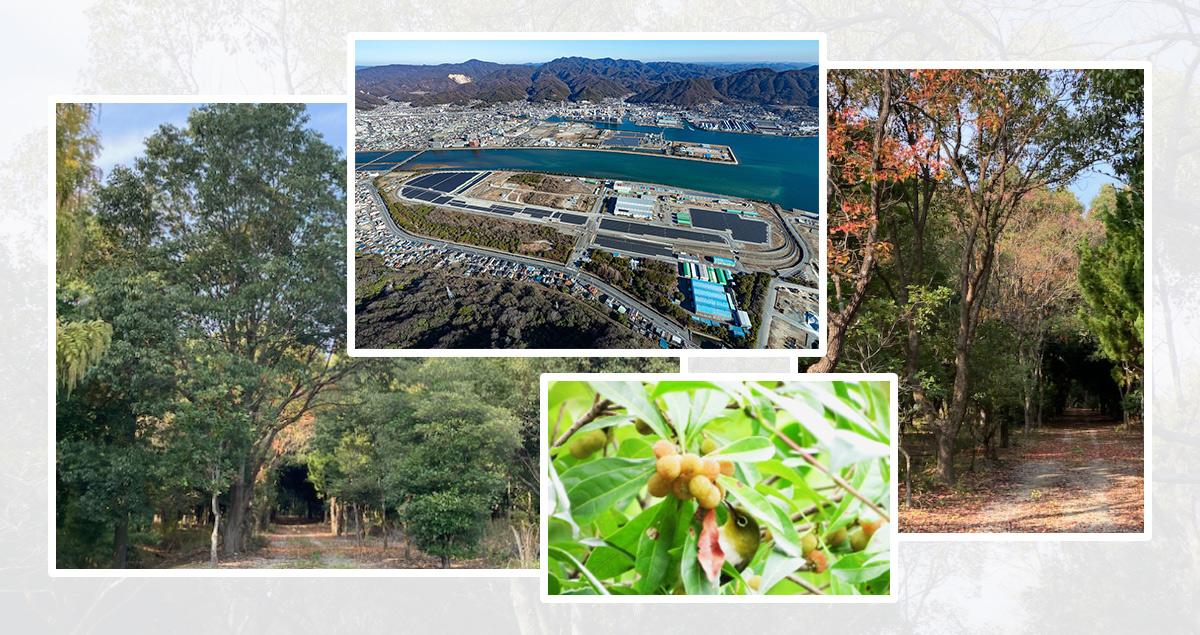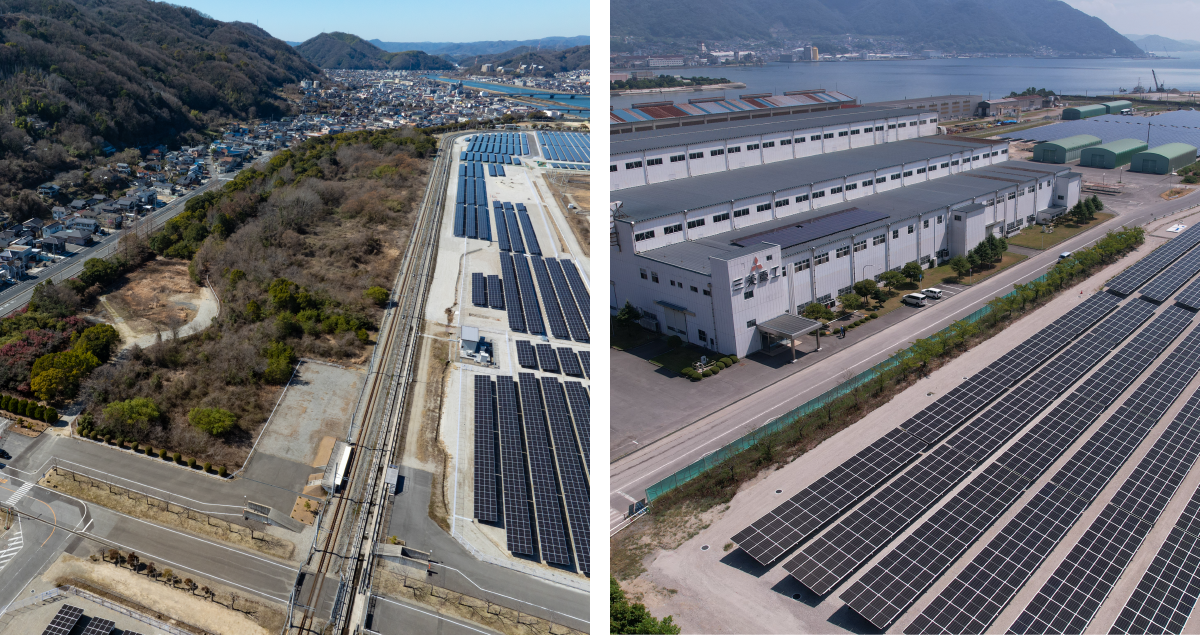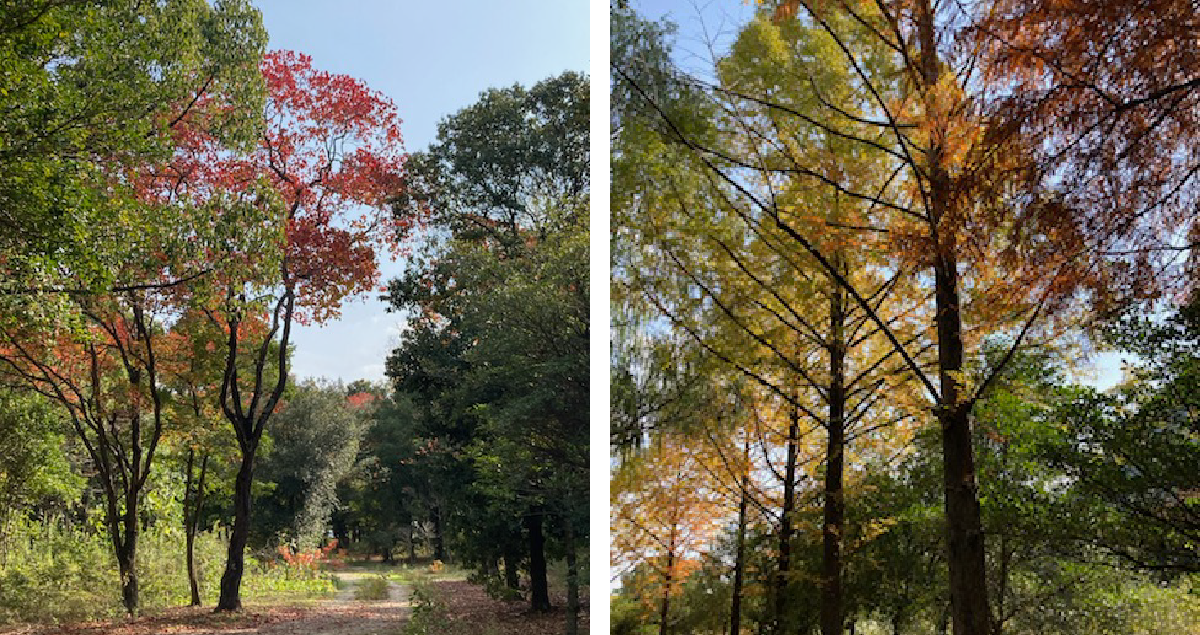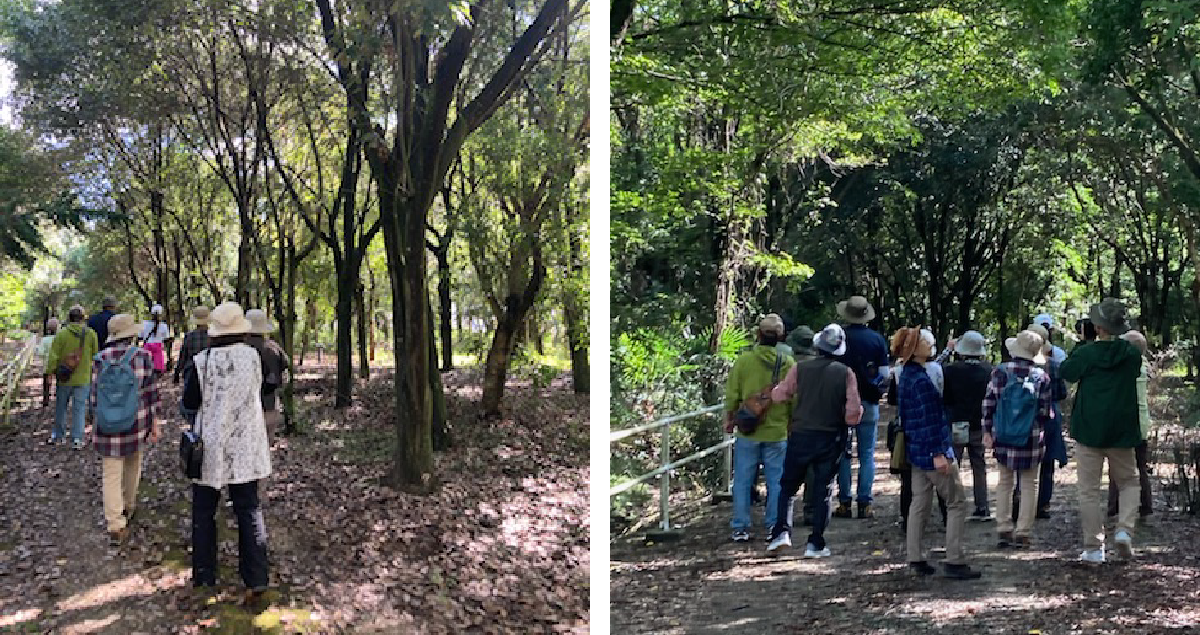A walk through Wadaoki Forest

Surrounded by marine areas, lush greenery and with the spectacular Mt Fudekage dominant in the landscape, the site that the Mihara Machinery Works occupies is no ordinary factory setting.
The Mitsubishi Heavy Industries (MHI) plant in Japan’s Hiroshima Prefecture was established in the 1940s to make steam trains and air braking system for railway vehicles. Today, it is still delivering cutting edge transportation systems, as well as paper machinery both domestically and internationally.

Befitting its impressive natural surroundings, the plant is also at the forefront of MHI’s environmental initiatives.
As a pilot project for achieving carbon neutrality, it is home to wide-ranging energy conservation and streamlining measures and is close to reaching a 97.7% reduction in CO2 emissions compared to FY2021 levels. By testing solutions at the site, MHI is continually acquiring vital carbon neutrality knowledge.
In recognition of the close relationship between biodiversity loss and climate change, the works’ Wadaoki plant – one of three plants at Mihara – is also home to an 8.3-hectare woodland area, known as “Wadaoki Forest”.

A vibrant ecosystem
“It is a cool and refreshing place,” says Emi Mae, who works in the site’s HR management department. “It’s alive with the sounds and scents of nature. When you hear the chirping of many different kinds of birds and feel the soil beneath your feet, it’s easy to forget you are within the grounds of a factory.”

There are, in fact, more than 40 species of birds in the forest, including doves, woodpeckers and pheasants. According to Mae, the site is also thought to serve as a resting place for birds flying in from the surrounding mountain ranges and the Seto Inland Sea, a vast waterway lying between Japan’s Honshu and Shikoku islands.
The forest is a vibrant ecosystem of many plant and animal species. But it wasn’t always like this – and creating such a space demands years of cultivation and continuous maintenance and management.

“Once, there was no vegetation here at all,” Mae says. “But in the 1970s, we started planting thousands of saplings and trees with the aim of creating a forest in harmony with the landscape surrounding the factory.”
Today, the company is consistently working to enhance the biodiversity at the site, maintaining the landscape and monitoring the species that call Wadaoki Forest home.
Raising awareness of biodiversity
Of course, the factory’s employees are among those that spend time in the forest, and for some it has become part of their daily routine to go for a short stroll, or to find a moment’s peace among nature.

In the early 1990s, walking paths were established, followed by benches and resting places. Employees have volunteered to plant trees, a local birdwatching society visits on a regular basis, and MHI is considering other ways it can open up the site to the wider community.
For Mae, creating an awareness of biodiversity and natural capital among employees and locals in such ways is vital to the site’s continuing success.

Business’s vital role in nature positivity
Wadaoki Forest was recently deemed, by Japan’s Ministry of the Environment, to be a Nationally Certified Sustainably Managed Natural Site. It was recognized for being an “area for provision of ecosystem services, where there exists a healthy ecosystem consisting of a variety of plant and animal species, mainly native species”.

Through this system, Japan’s government certifies areas in which biodiversity is being protected through private-sector initiatives. This is part of the country’s efforts toward the international “30by30” target – to conserve at least 30% of land and sea areas as healthy ecosystems by 2030.
For MHI, the forest and Mihara Machinery Works are an example of how companies can work toward nature-positive and carbon-neutrality goals in an integrated way.
For many employees, it has become something even more – a soothing, special place that, in Mae’s words, “comforts our hearts”.
Read more about MHI Group’s Declaration on Biodiversity





